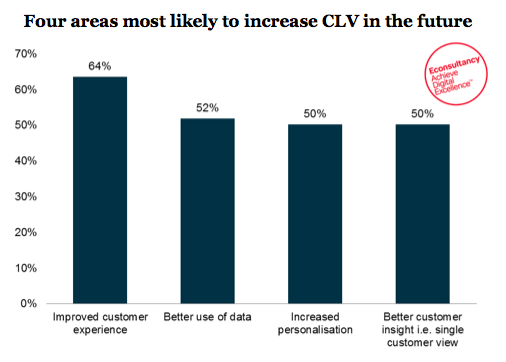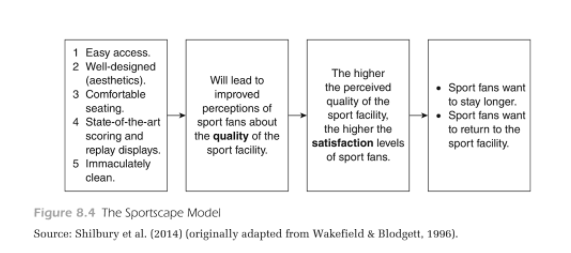Customer lifetime value for Events – How to improve it?
What is customer lifetime value and how important is it for your events? Let’s find out:
Quick question: what is more important for you: attracting new event customers or making sure the ones you already have stay happy and enjoy a nice experience?

Photo by Tanja Heffner on Unsplash
Though there is no absolutely right answer I would rather choose the latter. And there’s many reasons to do that.
Better experiences for existing ticket buyers means more loyal customers. More loyal customers mean better word of mouth exposure. More exposure means new customers.

Areas where increase in CLV can be expected. Read more on Econsultancy
So you see – there is no real choice between the two. It’s just that you need to take a customer lifetime value approach to managing your event business. By taking the long term approach to building your event brand, you choose the winning combination of increasing customer base AND improving customer loyalty and experience.
What has been coined as the “customer lifetime value” is a metric that shows in fact two things. A. you value your customers and want to keep them as loyal as possible and B. you’re thinking long term rather than short term. If both A and B apply to you that means you are probably in for a long carrier in the event planning business.
How do I know my event’s customer lifetime value?
Simply put the lifetime customer value is pretty simple to express. It is the total revenue your company will receive from a representative customer throughout your total business relationship. That means everything your customer has paid so far and what he or she will spend in the future with you.
Now let’s just stop right there. Do you spot the two main issues?
One is the fact that there is no such thing as a representative customer. Each of your customer has individual habits so you must at least split your customer base according to specific attributes and spending habits (these are called cohorts in retail analytics but we can just stick with groups).
The other main issue is that unless you have some special ability unknown to all of us other mortals, you are not really able to look into the future. What you can do is look back at your event attendees’ purchase history and try to come up with some sort of estimate for the timeframe you expect your customer to remain loyal to your events.
These are the two basic elements used to improve customer lifetime value. One is segmentation and adapting needs to specific groups and the other is improving the total customer lifetime.
Segment your audience and adapt to your attendees
You know what makes a great music festival great? The fact so many seemingly diverse things seem to fall right into place. It’s those tiny details that seem personal to different groups.
But to do this festival planners, large conference planners and others have to take into account both similarities and differences between attendee groups. They have to create specific content for specific audiences, usually split among stages, seminars or multiple experiences.
This way they can increase the event size and revenue, whereas at the same time they make it enjoyable for everybody. By targeting individual needs and structuring specific experiences for similar groups they are able to create intimate experiences enjoyed by large masses.
Extend your customer lifetime through personalized experiences and marketing
If you can understand what makes your customers enjoy your events using segmentation, you can also personalize your communication and the experiences you are building.
There are many tools out there that help you segment your communication strategy. Facebook (Custom Audiences) and Google both have remarketing options that allow you to display specific messages to specific audiences.

An example of how can CLV be extended in sports events. Extract from Managing Sport Facilities and Major Events: Second Edition
Even direct marketing tools such as MailChimp provide off the shelf segmentation tools. They range from simple to advanced and you can fit right in your sweet spot. And yes, email marketing for events does work.
What about in event customized experiences? That’s easy to do with NFC wristbands and we can help you with that. Based on your previous interactions with you attendees you can create personalized perks and interactive experiences.
You can allow you loyal event goers access to specific areas (such as the VIP lounge or the backstage). You can direct them to curated experiences and you can just as well create personalized goods that can be handed when your attendees arrive at the registration. Such a personalized approach can make your customers feel valuable and cared for.
What other ways to extend customer lifetime do YOU use? Please share your answer below:
Article written by .
Mike Dragan is the cofounder and CEO of Oveit and works daily on providing better tools for live experiences. Mike has a background in computer science and loves building digital products.